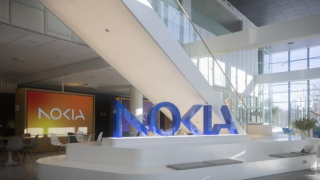I arrive at Interxion’s London offices at a very interesting time for the company, which is in the middle of building its latest data centre facility in London on the Brick Lane campus, within the confines of the 17th Century Old Truman Brewery. At one stage it was “the largest exporter of beer around the world and had over a million sqft of mixed-use commercial space", Fray tells me.
Today, Interxion owns a large part of the site with its LON1 and LON2 data centre spaces and, with LON3, it’ll make Interxion an even more remarkably unique proposition situated right in the middle of London, as opposed to other hubs in the Docklands or Slough.
The news that Interxion invested £30 million to create LON3 was welcome news to the UK Government, which said it would further strengthen the infrastructure of the UK digital economy.
“Regionally, we’re also diverse from the Docklands,” he adds. “A number of our customers see this diversity as another benefit of working with us.”
It puts Interxion in an interesting position from a connectivity standpoint, where it has in excess of 90 connected providers, from traditional carriers, content delivery networks (CDNs), data networks or similar. “This is a great success story for us,” Fray tells me. “We have a core LINX network here, as well as LONAP, and other peering points such as BT. We’ve developed this significant connectivity hub and overlaid that with best of cloud, such as AWS and Microsoft Azure,” he adds.
Interxion brings international networks into London, particularly from Chicago and New York, and other trading venues. On page 9 you can read how Interxion is playing a key role for BSO and its service enabling direct trading and market data access between the Dubai Gold and Commodities Exchange (DGCX) and Interxion London.
“We’re particularly strong with financial services, as it is off the city, but not in the city, which makes us highly accessible. We’ve had significant uptick and lots of migration work has been conducted over the past year, when we've seen an increase in financial services community by 15%.”
A key focus for Interxion UK is MiFID II. The markets in financial instruments directive (MiFID) is a regulation that increases the transparency across the European Union's financial markets and standardises the regulatory disclosures required for particular markets.

“The key thing for connectivity is MiFID II,” says Fray. “Under it, one of the objectives is to demonstrate best execution. The regulation comes into force on 3 January and this means the different trading venues need to not only track their trades but also be able to report and be audited against them.”
This has led to a few development areas for Interxion UK, the former Telehouse Europe director says. “The first is time stamping. We’ve designed neutralised GPS, so our customers can now receive consistent, fully redundant GPS feed on their activity and trades.” However is this enough for MiFID II? Fray says that some of its customers believe it but reveals that Interxion UK is looking heavily at adding certified coordinated universal time (UTC) on site as well. “We’ve already got GPS up-and-running on-site but we’re considering whether we need to add to this,” he adds. “To some extent we’re becoming time lords.”
Interxion UK is also looking at how to create enhanced fairness within trading venues. “This is to give our members not the lowest latency but the fairest latency. We’ve developed a cable parity product for our customers, which we’ll announce in the imminent future.”
On a global scale, Interxion is finding itself needing to be more connected now more than ever to offer its customers far more connectivity and services options.
Digital media services is another strong string to Interxion UK’s bow and “there have been some very significant developments this year”, Fray explains. The way content is being consumed is very different, moving increasingly away from television towards tablets and handheld devices. Gaming is another huge growth area and Interxion UK’s head uses an example from home, pointing to how his own son often plays online multiplayer game Call of Duty.
Fray believes artificial intelligence (AI) pressures are a long way off but that entertainment, sport and live gambling are prominent segments to focus on. “Gambling in particular is a huge trend as it is a form of high frequency trading. Surely we’re not far for a MiFID II in a gambling perspective to audit these trades,” Fray interestingly points out.
More content demand, capacity, and user consumption equates to the super exponential growth of data and the requirement to orchestrate it. Interxion UK’s hybrid-cloud technology and LON3 will certainly go a long way to help facilitate for this.




